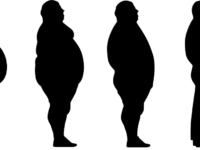Got a headache? At this point, many would go to their medicine cabinet and wash down a pill or two of painkillers. Sometimes the drug does as it was intended. Other times, no results come from swallowing that little capsule, or perhaps the effects are slower to come than expected. It would be easy to brush it off and simply say the medicine was “not for me,” but what if it was possible to improve the effectiveness of the medication just by rolling over on the couch?
Oral ingestion is a widely popular method of medicine intake while simultaneously being a difficult journey for the drugs to take.
Oral ingestion is a widely popular method of medicine intake while simultaneously being a difficult journey for the drugs to take. Once the drug passes from the mouth to the stomach, resisting degradation in highly acidic stomach fluids, it makes its way into the small intestine where it gets absorbed into the bloodstream. In this trip, it must pass through the liver and other body organs where it must survive partial metabolism. By the time the drug makes it to its location of effect, a smaller amount than what was originally ingested is available to function; researchers call this fraction of the dose the bioavailability of a drug.
Various studies agree that the bioavailability and absorption time of some drugs could be attributed to the amount of time it remains in the stomach. Gastric emptying, where the contents of the stomach move to the small intestine, could be affected by multiple factors, one studied currently in pharmacokinetics being posture. Observations of the influences of posture on drug absorption are not new. Studies on this effect date back to 1918 and have since been observed for various drugs, according to a 2008 review by Christian Queckenberg from the Clinical Pharmacology unit at the University of Cologne. According to Queckenberg and a 1992 study by the Clinical Pharmacology Group from the University of Southampton, lying on one’s right side, sitting, and standing can increase both the drug’s absorption time and bioavailability. Lying on one’s left side and supine, in contrast, resulted in opposite effects. A recent 2022 study by researchers at Johns Hopkins University corroborates these findings in their model of the GI tract. Their simulation showed that, when leaning right, gravitational forces set the pill in an optimal position for the stomach’s series of contraction and expansion pulses to push it through to the duodenum: the upper segment of the small intestine. Some studies propose that this increased gastric emptying rate could allow drugs to rapidly bypass their first metabolism with a greater concentration intact.
According to Queckenberg and a 1992 study by the Clinical Pharmacology Group from the University of Southampton, lying on one’s right side, sitting, and standing can increase both the drug’s absorption time and bioavailability.
The stomach isn’t the only organ affected by position either. Researchers know position affects other regions of the body as well. This list includes plasma distribution in the body, hepatic blood flow, metabolism, renal elimination, and the autonomic nervous system via skin pressure. For example, lying on the right side stimulates the vagus nerve, a component of the parasympathetic nervous system. This system relaxes muscles in the body — opposing stress responses — which would encourage digestion.
Implications of these findings can do more than quicken pain relief. One study highlighted by Queckenberg’s review even recommended using posture to aid in overdose treatments. Since lying on the left side decreases rates of absorption of some drugs, the researchers suggested laying patients in this position as a first aid step. Whether or not posture has a known significant effect on the drug at hand, repositioning may assist in the process of detoxification by slowing further absorption.
Nevertheless, posture can only do so much for a drug’s journey. There are numerous other factors that play even larger roles in how the body metabolizes these substances, and even those effects depend on the properties of the medicine itself. It would be difficult to say that one posture has significant effects on all drugs. The researchers from the University of Southampton claimed that posture effects worked best in cases where the drugs were quickly absorbed into the bloodstream after gastric emptying. Likewise, others found that the effects of posture decreased when drugs were taken with solid food or nutrient-rich liquids — both of which decrease gastric emptying rates. So the next time you feel a headache, perhaps it would be a good idea to take that Tylenol on an empty stomach, and then lie down on your right side for a bit.
Sources:
British Journal of Clinical Pharmacology (1992). DOI: 10.1111%2Fj.1365-2125.1992.tb05639.x
European Journal of Clinical Pharmacology (2009). DOI: 10.1007/s00228-008-0579-2
Physics of Fluids (2022). DOI: 10.1063/5.0096877





